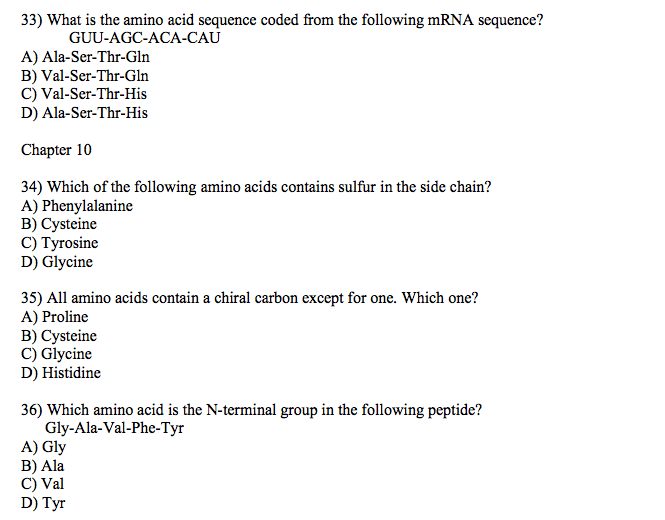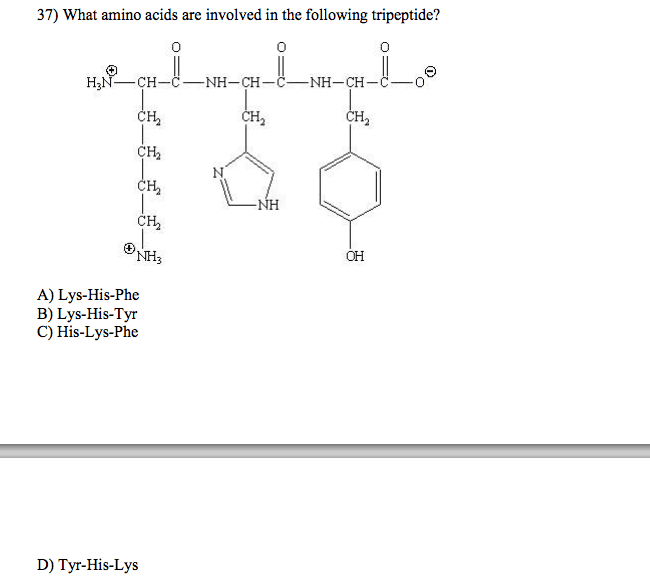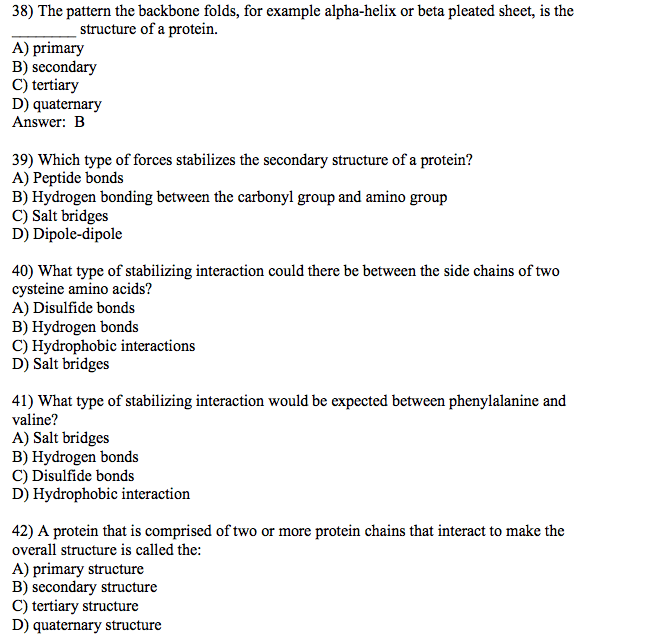Biochemistry 2280A Lecture Notes - Cell Membrane, Peptide, Aromatase
Document Summary
The second level of protein structure describes the local pattern of the backbone or linear amino acid sequence. These structural elements are stabilized by hydrogen bonds between the backbone amino and carboxyl termini. Two major types of secondary structure include the alpha helix and the beta strand (also known as the beta-pleated sheets). There are other types of secondary structures, but these two are the most common. Hydrogen bonds are bonds between a hydrogen atom and an electronegative atom, such as nitrogen or oxygen, when the hydrogen itself is covalently bonded to another electronegative atom. This form of bonding occurs very frequently in many types of protein structures. Hydrogen bonds are strongest when the three atoms involved are in a straight line. For example, amino acids in polypeptide chains are often hydrogen bonded together. Hydrogen bonding is most recognized in water molecules. The alpha helix is a coiled spring arrangement of secondary structures found in proteins.






